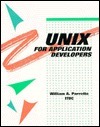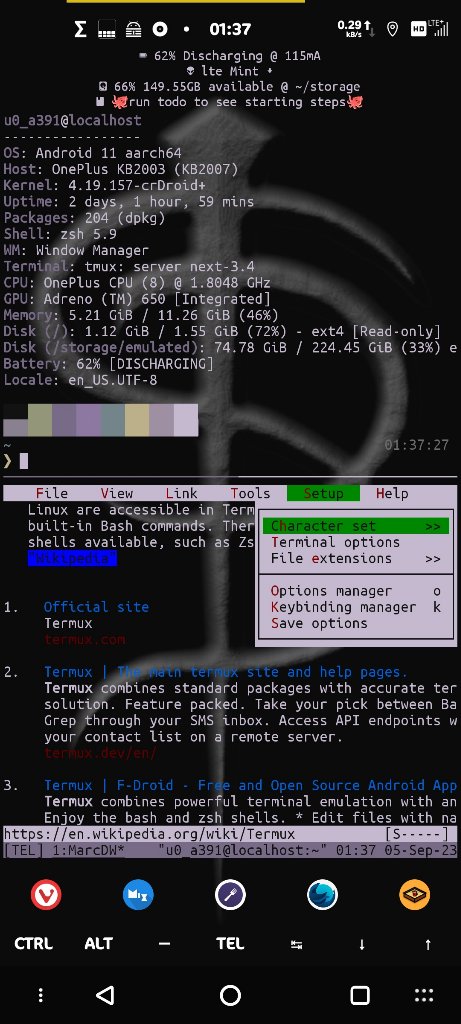
Then resurrect it. Give it life by posting to it. 😏

Then resurrect it. Give it life by posting to it. 😏
I’m gonna have to give this one a try. Syncthing is being a pain in my backside.
Got Void running on an old laptop about a year ago. Very nice. The fact that it is not based on any of the others also made it appealing.
True. Luckily I don’t have anything large (4GB+). I do plan to change the filesystem. I forgot to mention that I used to have Windows 7 on that old laptop. The other reason why the shared partition was FAT32/vfat.
Sorry for the really late response. Since one of the OSes is BSD I have one shared FAT32 partition mostly for basic getting-things-from-one-to-the-other stuff. Far as I know OpenBSD does not support ext4 (at least not r/w). It does support ext2.
Since all three OSes have the Nextcloud client it would have been cool to have its directory on a shared partition to reduce redundancy.
I may change things up, format it to ext2 and see if I can use it to share Documents, Music, Pictures, and Video across all three OSes. Maybe.
I have a triple boot laptop with MX Linux, Void Linux, and OpenBSD on an old laptop where VMing wouldn’t work so well.
As others have pointed out a shared home directory is not a good idea. Shared data (documents, music, images, etc.) would be fine as mentioned previously.
Never really distro hopped. Went from DOSLinux to Slackware and stayed put as my main. Having multiple machines, some multi booters, meant I had/tried a bunch of others. Vector Linux, Xubuntu, Debian Wheezy, several Arch-based (up to Garuda), various BSDs, and two unices (OpenSolaris/OpenIndiana, IRIX). Got an old ancient ToughBook (Pentiun II, 192MB RAM) with Arch before systemd collecting dust.
[ Those machines had multiple Windows versions also from Win2k to Win7 including XP x64 Edition ] Dem were da days. 🥰
Currently, Main laptop: Slackware. 2nd laptop: MX Linux, Void Linux, OpenBSD. Mini PC: Slint (Slackware-based).
Well, for the mini PC I did distro hop. Went through a lot trying to find the right one. Most were Arch-based (but not Arch itself) and they would indeed break at the worst time. Nature of bleeding edge rolling release I guess. Mostly I was looking for something non-systemd. Eventually settled on Slint.
I have/had a bunch of these books. Some got lost but I have the electronic versions of them.
This is one other book I fondly remember. UNIX For Application Developers. From 1991 I think. I vaguely remember a statement in the intro along the lines of Windows being user friendly but UNiX being expert friendly. :-)

Couldn’t find a better image.


Way back when DOSLinux existed the dev provided a Midnight Commander with a fully loaded F2 menu as well as setup associations. Could literally do almost anything and everything from within the file manager. I later moved the configs over to Slackware and pretty much lived in MC to get things done. At some point the MC code reduced the number of entries in the F2 menu so I would have to rebuild it to remove the limitation.
No longer use it like that today but MC is used constantly for file management locally and remotely (mostly to a Kodi box).
Using OFMs (Norton/Volkov/Midnight Commanders and FAR) has always been easier and faster to use than Explorer-style GUI FMs for me.
Oops, sorry. 😬
If one decides to mess with it, some notes. Last release was awhile back. I don’t use Android 12/13 so no idea how well it works there.
Tel and Tel:API have same package names as Termux and Termux:API. Meaning there should be no trace of Termux on system before trying.
Not really battery friendly when using the default status info up top.
Powerful command line environment. Recommend that one is familiar / comfortable with the CLI.
Can use it as a launcher also I guess. Termux Expert Launcher.

Been awhile since I did that but it was really cool. An Xfce desktop from the phone onto my TV. Time to revisit that and play around some.


I temember when Slackware still included it. Used to recompile any apps that still supported the toolkit just to have a better look and feel. I miss OpenWindows.


NsCDE is my desktop on Slackware, Slint, Void, and OpenBSD. I guess I’m most comfortable with it.
Just for tinkering so far. I have a habit of tossing the devices aside for long periods of time when an OS breaks badly. 😁
Technically SailfishOS handles most of the requirements to make the device a daily-driver-in-training. All but one of my Android devices are VoIP now. Getting away from carrier-based stuff (and saving money).
At the moment there isn’t really anything usable on the mobile linux side (SIP, calls via XMPP - I have JMP.chat numbers) that I am aware of. On SFOS that is. Though I can use movim via browser.
Guess it is time I took the devices seriously and try to use them more regularly.
Have the PinePhone and PP Pro. Partial to SailfishOS on both. It has the most smartphone feel if you will. Like with most the camera is pretty much a no go but I rarely use them anyway.
Currently… Slackware on main laptop. Slint (Slackware-based) on mini-pc. MX Linux (fvwm respin), Void, and OpenBSD on old laptop. NsCDE is desktop on all except MX.
I used Garuda in the past and was impressed. What’s cool is they have a bunch of ther own services in addition to Lemmy.
Garuda Linux | Startpage - https://start.garudalinux.org/